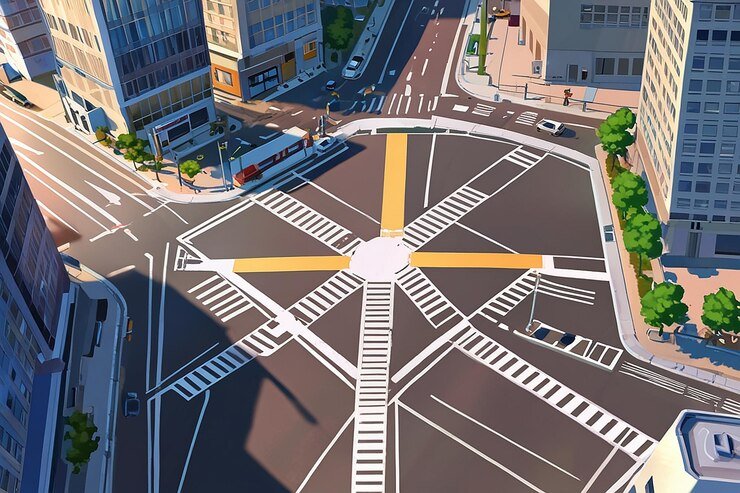Introduction
Traffic management is an essential aspect of urban planning, and with increasing vehicle populations, the need for innovative solutions has never been more critical. One such solution is the displaced left turn intersection (DLTI), which has gained attention for its potential to improve traffic flow and safety. In 2014, a news incident involving a Hummer at a displaced left turn intersection brought this traffic design into the spotlight. This article will explore the concept of displaced left turn intersections, the specifics of the 2014 Hummer incident, and the broader implications for traffic engineering and urban planning.
What is a Displaced Left Turn Intersection?
A displaced left turn intersection is a type of traffic intersection designed to facilitate smoother and safer left turns. Unlike traditional intersections where left-turning vehicles must wait for a gap in oncoming traffic, a DLTI allows these vehicles to make their left turns while also providing a dedicated lane for through traffic. This is achieved by shifting the left-turn lane to the left of the oncoming traffic lanes, effectively creating a “displacement.”
The primary goal of this design is to reduce delays for left-turning vehicles, minimize potential conflicts between turning and through traffic, and enhance overall intersection safety. DLTI configurations often feature dedicated signals for left-turning vehicles, which can reduce the number of traffic stops and improve the efficiency of traffic flow.
The 2014 Hummer News Incident
In 2014, an incident involving a Hummer at a displaced left turn intersection made headlines and drew public attention to this innovative traffic design. The event occurred in a busy urban area, where the DLTI implemented alleviate congestion enhance safety. Hummer, driven local resident, involved collision while navigating displaced left turn.
While the specifics of the incident revealed challenges associated with understanding the new intersection design, it also highlighted the importance of public awareness and education about DLTI configurations. Witnesses reported confusion among drivers unfamiliar with the displaced left turn concept, leading to near misses and potential accidents. The incident sparked discussions about the need for clearer signage, public education campaigns, and driver training to ensure the safe use of such innovative intersection designs.
Benefits of Displaced Left Turn Intersections
Despite the challenges highlighted by the 2014 Hummer incident, the benefits of displaced left turn intersections are numerous. Here are some key advantages:
1. Improved Traffic Flow: DLTI configurations can significantly enhance traffic flow by allowing left-turning vehicles to move more efficiently. This reduces congestion at busy intersections and improves travel times for all road users.
2. Reduced Delay for Left-Turning Vehicles: By providing dedicated lanes and signals for left-turning vehicles, DLTI reduces the wait time for drivers making left turns. This can lead to a more streamlined driving experience and fewer frustrated motorists.
3. Increased Safety: The design of displaced left turn intersections minimizes potential conflict points between left-turning vehicles and oncoming traffic. With fewer interactions, the risk of collisions decreases, contributing to overall road safety.
4. Space Efficiency: urban areas where space limited, DLTI can maximize use available road space. particularly beneficial densely populated regions where expanding roadways often feasible.
5. Reduced Pedestrian and Cyclist Conflicts: By separating left-turning traffic from through traffic, DLTI can create safer crossing opportunities for pedestrians and cyclists, reducing the risk of accidents involving vulnerable road users.
Implementation Challenges
While displaced left turn intersections offer numerous advantages, implementing this design comes with its own set of challenges. As highlighted by the 2014 Hummer incident, public education is critical. Drivers must adequately informed about navigate DLTI configurations ensure safety and efficiency. Additionally, clear signage and road markings are essential to guide motorists through these intersections effectively.
Moreover, traffic engineers must consider the unique characteristics of each intersection when designing a DLTI. Factors such as traffic volume, speed limits, existing infrastructure must taken into account to ensure successful implementation.
Case Studies and Success Stories
Several cities across the United States have successfully implemented displaced left turn intersections, demonstrating their effectiveness in improving traffic flow and safety. For instance, cities like Fort Collins, Colorado, and Salt Lake City, Utah, have reported positive outcomes following the introduction of DLTI designs. These success stories serve as valuable case studies for other urban areas considering similar traffic management solutions.
Conclusion
The concept of displaced left turn intersections represents an innovative approach to addressing the challenges of modern traffic management. The 2014 Hummer incident served as a reminder importance of public awareness and education when introducing new traffic designs. By understanding benefits and challenges configurations, urban planners traffic engineers can work towards creating safer and more efficient roadways.
cities continue evolve face increasing traffic demands, displaced left turn intersection may play vital role shaping the future urban transportation. With continued education, effective design, community engagement, potential enhance the driving experience road users while promoting safety and efficiency roads.
Categories: News
